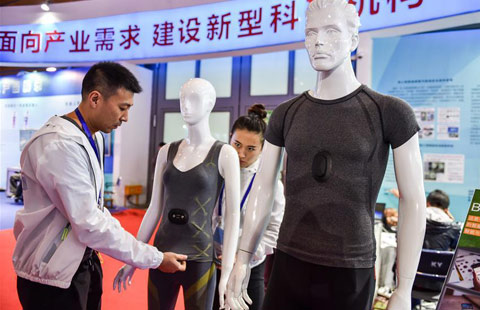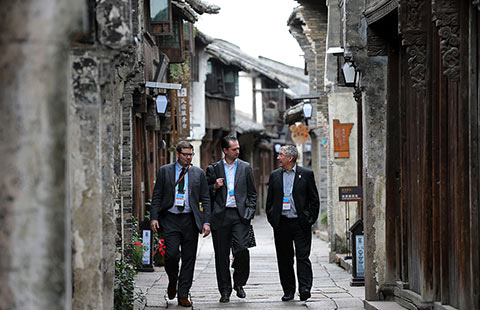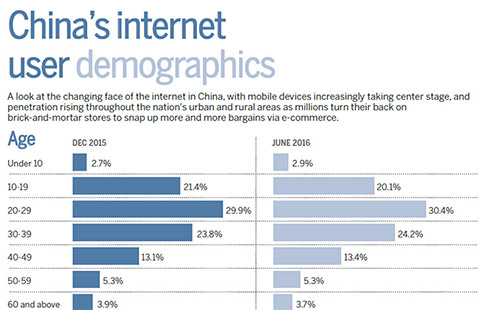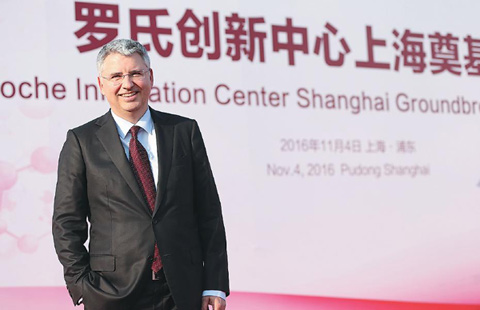Industry drive in progress for Beijing to ease population glut
BEIJING - Zhang Yue has been a wholesaler in Beijing for nearly a decade. But if he wants to continue his business, he now has to resettle in a strange, new place.
Zhang, 40, from East China's Anhui province, started his clothing wholesale chain at the Beijing Zoo wholesale market 10 years ago. Starting last year, major wholesale markets in Beijing have been relocated one after another.
"Many wholesalers and I have visited Yongqing county for several times, and, probably, my family are going to move there next year," Zhang said.
Yongqing county, an hour's drive south of Beijing, is located in neighboring Hebei province. With an investment of 60 billion yuan ($8.7 billion), a new market is being built there to provide new work and homes to those displaced from Beijing.
Relocation and population
"Some wholesalers have already moved to Baigou, Baoding city in Hebei, a two-hour drive from Beijing," Zhang said.
According to the latest municipal development plan, Beijing plans to cap its population at 23 million by 2020, reducing the population in six core districts to 15 percent lower than 2014 levels.
Non-capital functions, including manufacturing, logistics, wholesale markets, and partial functions of public service, are gradually being phased out to ease Beijing's "urban disease," the municipal government said in July last year.
Built in the mid-1980s, Beijing Zoo wholesale market became a hit with young people wanting to look fashionable on a budget.
The relocation of the market started in 2014 and is expected to be completed by the end of the year.
So far, over 300 wholesale markets have closed or relocated in the past three years in an effort to reduce traffic congestion and curtail population density in Beijing.
"As businesses are moved away, so are the people who work in them," said Ren Luyan, director at the Beijing Municipal Commission of Development and Reform.
According to the commission, the annual growth of Beijing's population in 2014 and 2015 decreased by 231,000, down 1.3 percentage points, compared with the former three years of the 12th Five-year Plan (2011-2015) period.
Beijing was home to 21.7 million permanent residents by the end of 2015, 189,000 more people than 2014, registering a 0.9 percentage point decrease in its growth rate.
The dual decrease of Beijing's population net increase and growth rate has shown some progress in the city's population control, an official with the commission said.
"I will try my luck in Yongqing. If my business does not work there, I will consider switching to another line of work, or going back to my hometown."
According to Zhang, the new site in Yongqing is not as advantageous as the Beijing Zoo market and is desolate for now.
"But I want to continue my clothing wholesale business, which is what I am familiar with. I hope the government can do more to help us attract customers in Yongqing," Zhang said.
Transformation and innovation
Beijing has also adopted a differentiated water and electricity price policy as another way to cut the population , imposing higher charges for factories dumping pollution while lowering those reducing emissions.
Water, gas, electricity and heating prices are also higher in the six core districts than in other districts.
The six core districts are home to 12.8 million residents, 294,000 more people than 2013. The central districts of Xicheng and Dongcheng saw negative growth, a decrease of 9,000 compared with 2013, according to official figures.
Over 1,300 manufacturing factories have been shut down in the past three years, and some traditional factories have started to transform.
Beijing No.7 Paper Mill originally opened in 1955 and has been shut down to soaring costs and intense competition. It is now being rebuilt as an innovation park aiming to nurture high-tech talent.
A regional plan on reform and innovation in accordance with Beijing-Tianjin-Hebei integration was rolled out this July to push forward the innovation-driven economy.
"Instead of relying on the household registration system to keep people from rushing in, we should rely more on industrial transformation to curb Beijing's population growth," said Zhao Hong, deputy dean at Beijing Academy of Social Sciences.






















